Can you imagine exploring Madrid, Barcelona and Seville using public transportation like a Spaniard? In this practical guide, you’ll learn the most essential Spanish expressions you need to get around Spain by public transport without relying on translators or desperate gestures.
You will discover how to ask for directions without sounding like a tourist, understand responses from locals, buy tickets correctly, solve transportation problems immediately, and have basic conversations with drivers and locals. If you plan to travel in Spain, these phrases will transform your experience from chaotic to completely controlled in just 7 days of practice.
Table of Contents
My Story: How Transportation Phrases Changed My Travel Experience".
The first time I arrived in Spain, I landed at the Madrid airport from Playa del Carmen in Mexico. Faced with the subway map in Madrid-Barajas, which looked like an impossible maze, I was paralyzed. The vending machine rejected my card over and over again.
Taking a deep breath, I used my first Spanish phrase: “¿Cómo llego al centro?”
Those four words changed everything, the difference was immediate. The employee not only explained which ticket to buy, but showed me the fastest route and gave me tips on how to get around Madrid. That interaction taught me something fundamental: with the right transportation phrases, not only do you get to your destination, but every trip becomes an opportunity to learn and connect.
A week later, I was moving around Madrid as if I had lived there for years. The secret was not to speak perfect Spanish, but to know the exact travel phrases I needed for every situation: from buying tickets to asking for directions.
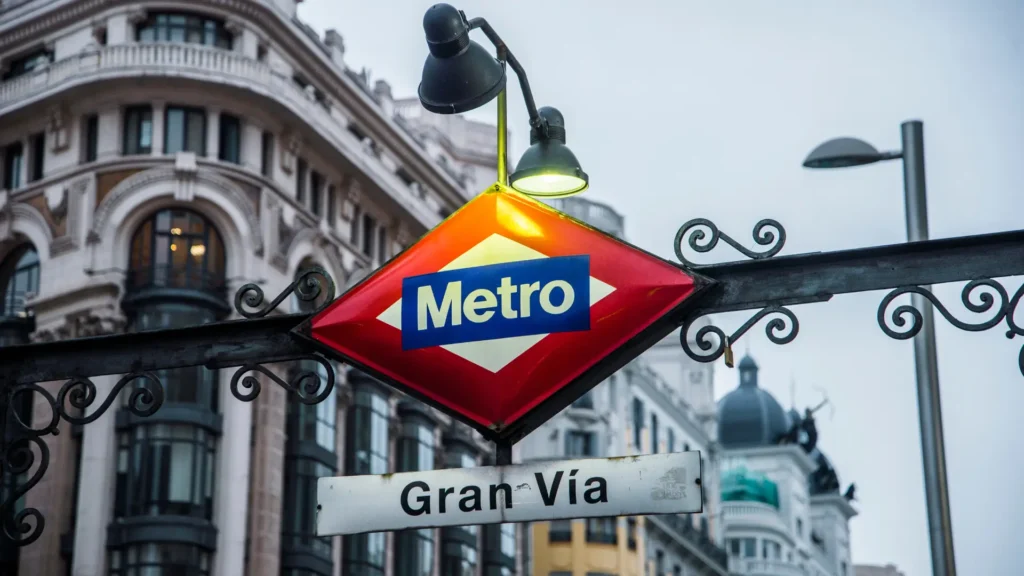
Metro and Urban Transportation
Let’s learn the Phrases that will Transform your Travel Experience in Spain.
Buying Tickets and Getting Oriented
1. “¿Dónde está la máquina de billetes?” (Where is the ticket machine?)
When to use: When arriving at any metro station
Typical answer: “Allí, al fondo” (pointing) ,(There, in the background)
2. “¿Qué billete necesito para ir al centro?” (What ticket do I need to go to the center?)
Variant: “…para ir a [destino específico]” (“…to go to [specific destination].”)
Useful for: Avoid buying the wrong ticket
3. “¿Esta línea va a…?” (Does this line go to…?)
Practical example: “Esta linea va a Sol? or “Esta linea va a Plaza Cataluña?Does this line go to Sol? (Madrid) or Does this line go to Plaza Catalunya? (Barcelona)
Respuesta común: “Sí, dirección…” o “No, tienes que coger la línea…” – (Yes, direction… or No, you have to take the line…)
Moving with Confidence
4. “¿En qué dirección tengo que ir?” (Which direction do I need to go?)
Context: When there are two opposing directions on the same line.
Tip: Spanish metros are identified by the end station.
5. “¿Cuántas paradas son?” (How many stops is it?)
Practical use: To calculate travel time
Variante: “¿Cuánto se tarda?” (How long does it take?)
6. “¿Me avisa cuando lleguemos a [estación], por favor?” (Could you let me know when we reach [station]?)
Spanish courtesy: Always add “por favor”.
Result: Spaniards are happy to help
In Case of Problems
7. “¿Por qué está parado el tren?” (Why is the train stopped?)
Situation: Service delays or interruptions
Respuesta típica: “Hay una incidencia” o “Regulación de tráfico” – (There is an incident or Traffic regulation)
8. “¿Hay otra ruta para llegar a…?” (Is there another route to get to…?)
Key moment: When your line has problems
Alternativa: “¿Cómo puedo llegar sin metro?” – (How can I get there without the subway?)
My Real Experience:
“On my second day in Madrid, the metro broke down on the line I needed. I used the phrase ‘Is there another route to get to Plaza del Sol?’ and an older lady not only explained the alternate route, but walked me to the correct station.Accurate Spanish phrases don’t just solve problems; they create human connections.”
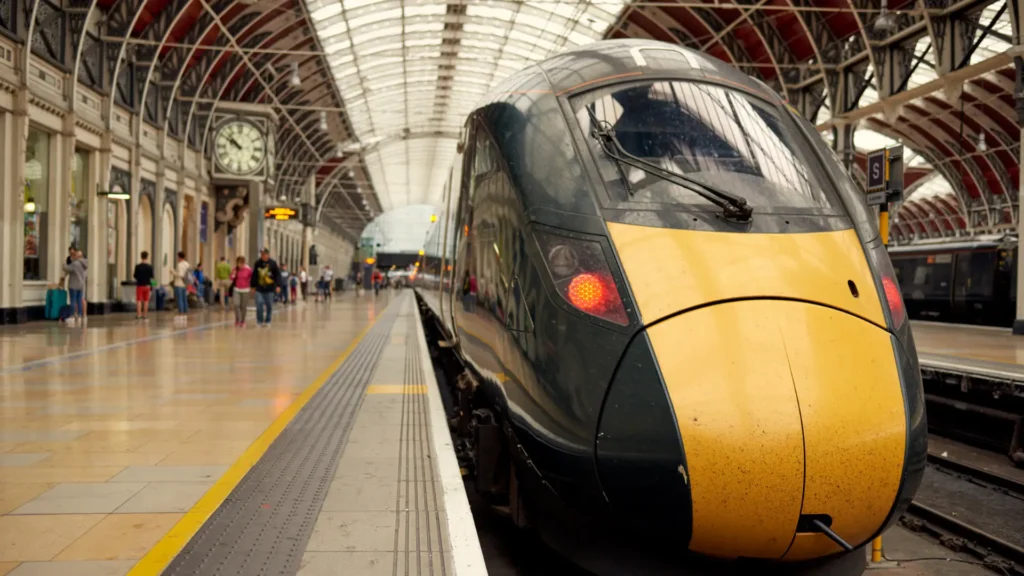
AVE and Cercanías Trains
At the Station
9. “¿Dónde está la taquilla?” (Where is the ticket office?)
Cultural difference: In Spain, people still prefer to buy at the ticket office for long trips.
Hours: Generally open from 6:00 AM to 10:00 PM
10. “Quiero un billete para Madrid/Barcelona” (I want a ticket to Madrid/Barcelona)
Additional information that you will be asked: “¿Para cuándo?” “¿Ida o ida y vuelta?” (When?” “One way or round trip?
Class options: Economy, Economy Plus, Preferente
11. “¿A qué hora sale el próximo tren?” (What time does the next train leave?)
Useful follow-up: “¿Y el siguiente?” ” And the next one?
Para planificar: “¿Cuál llega antes a [destino]?” (Which arrives at [destination] first?)
During the Trip
12. “¿Este asiento está libre?” (Is this seat free?)
Spanish protocol: Always ask before sitting down
In AVE: Seats are numbered, in Cercanías they are free.
13. “¿Falta mucho para llegar?” (Is it much longer to arrive?)
Context: For long journeys in Cercanías (suburban trains)
Typical answer: “Unos 20 minutos” o “La próxima parada”. (About 20 minutes “or The next stop)
My Discovery:
“With a Spanish friend, I discovered that the Cercanías trains are perfect for exploring nearby towns. From Madrid I took the Cercanías to Toledo for only 10€ round trip. The phrase ‘¿Cuánto cuesta ida y vuelta a Toledo?’(How much does it cost to get to Toledo and back?) opened the door to inexpensive excursions that no tour offered.”
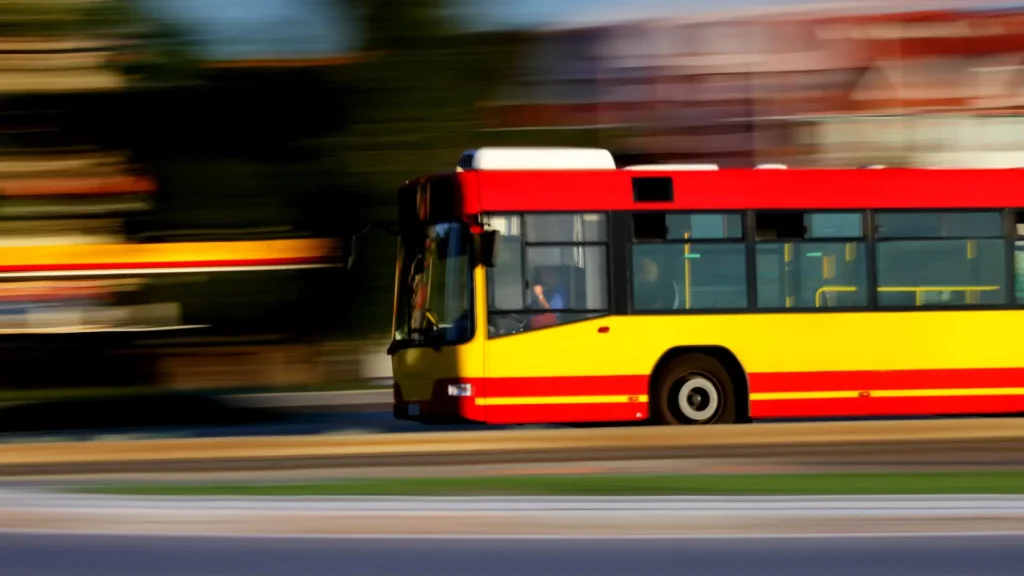
Buses: Connecting with all of Spain
Let’s get to know the phrases you will use to travel by bus through any city in Spain.
Urban Buses
14. “¿Esta parada es de la línea [número]?” (Is this stop for line [number]?)
Ejemplo: “¿Esta parada es de la línea 5?” (Is this stop on line 5?)
Useful because: Not all stops have all lines
15. “¿Dónde tengo que bajar para ir a…?” (Where do I need to get off to go to…?)
Tip: Spanish drivers are usually very friendly to tourists.
Pregunta típica:: “¿Me avisa, por favor?” (Would you please let me know?)
Interurban Buses (ALSA, etc.)
16. “¿Cuánto cuesta el billete a [ciudad]?” (How much does the ticket to [city] cost?)
Additional information: “¿Hay descuentos para estudiantes?” (Are there any discounts for students?)
Comparar: “¿Es más barato que el tren?” (Is it cheaper than the train?)
17. “¿Tengo que hacer transbordo?” (Do I need to change buses?)
Key for: Travel to small towns
Typical answer: “Es directo” o “Tienes que cambiar en…” (It’s direct or You have to change in…)
Personal Experience:
“Companies like ALSA allowed me to explore charming towns like Ronda from Malaga. The simple question ‘How much does it cost to Ronda’ led me to discover that for 8€ I could see one of the most beautiful villages in Spain. Buses connect places that trains can’t reach.”
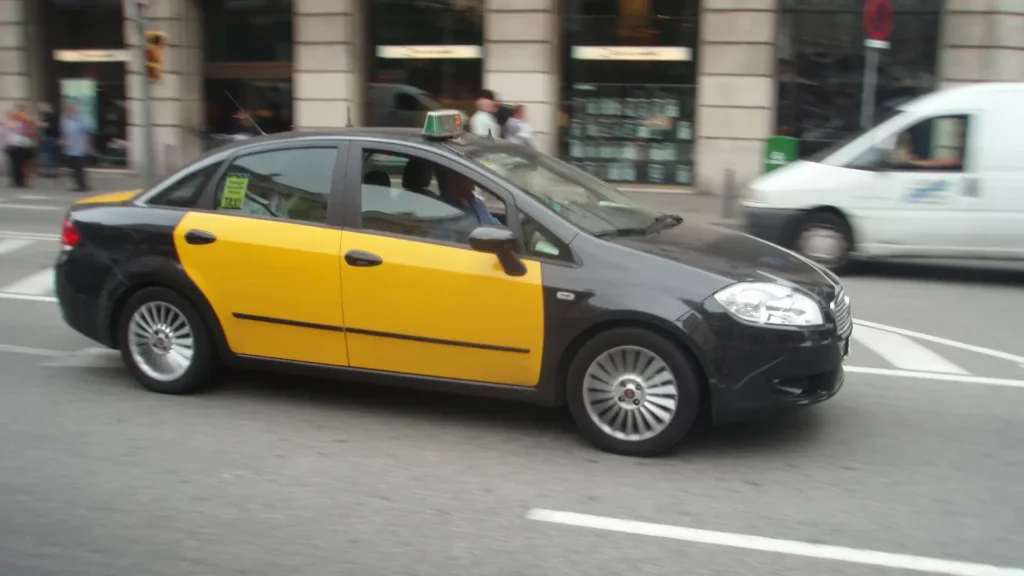
Cabs: Negotiating like a Spaniard
Getting in the Taxi
18. “¿Puede llevarme a [dirección]?” (Can you take me to [address]?)
Tip: Have the address written down or on your cell phone.
Optión: “Al aeropuerto/estación, por favor” (To the airport/station, please)
19. “¿Cuánto costará aproximadamente?” (How much will it cost approximately?)
Strategic use: Ask before going up to avoid surprises.
In large cities: They usually use a taximeter.
20. “¿Conoce una ruta más rápida?” (Do you know a faster route?)
Rush hour: Especially useful in Madrid and Barcelona
Confidence: Local cab drivers know all the shortcuts
At the End of the Journey
21. “¿Puede darme un recibo?” (Can you give me a receipt?)
For expenses: Important for corporate travel
Courtesy: “Gracias por el viaje” (“Thank you for the trip”)
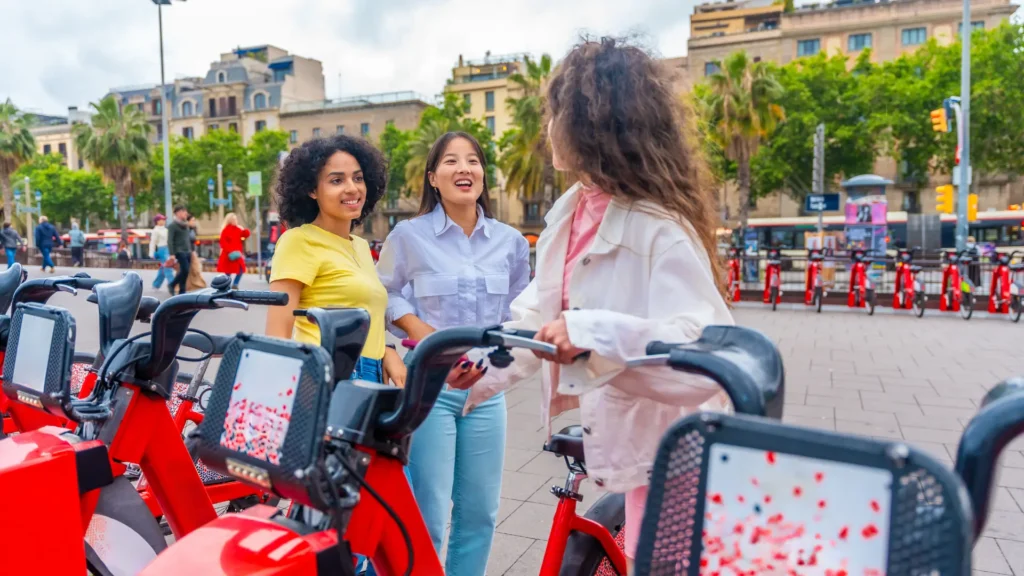
Public Bicycles: Modern Local Transportation
22. “¿Cómo puedo alquilar una bicicleta?” (How can I rent a bicycle?)
For tourists: Donkey Republic, Biciclot (Barcelona)
Valencia: Valenbisi has options for visitors
Seville: Sevici offers temporary season tickets
23. “¿Dónde devuelvo la bicicleta?” (Where do I return the bicycle?)
Important: Not all stations accept returns.
Tip: Check the map of active stations
My Bicing Adventure
One of my most vivid memories was trying to use the public bicycles on my first vacation to Barcelona. After exploring the old town and enjoying my first tortilla de patatas, I wanted to go to Barceloneta.
I saw the Bicing bikes and thought it would be perfect. I went over and tried to rent one, but the system was rejecting my card. That’s when a guy explained to me: “Bicing bikes are not for tourists, only for residents”. (“Bicing bikes are not for tourists, only for residents.”)
Applications and Technology: Phrases for the Digital Age
Using Mobile Applications
24. “¿Hay WiFi gratis en la estación?” (Is there free WiFi in the station?)
Reality: Most large stations have WiFi
Password: Information is usually given at the counter.
25. “¿Funciona esta app aquí?” (Does this app work here?)
Moovit: Works in all Spanish cities
Local Apps: EMT Madrid, TMB Barcelona
My Greatest Discovery:
“The Moovit app completely transformed my experience. I never felt lost, even in cities I was visiting for the first time. But the Spanish phrases were still essential for situations that no app can solve: unexpected delays, last-minute changes, or just connecting with local people.”

Transportation and Payment Cards: Essential Financial Vocabulary
Purchasing Transportation Cards
26. “¿Qué tarjeta me recomienda?” (What card do you recommend?)
Madrid: Multi Card or Madrid Tourist Travel Pass
Barcelona: T-Casual o Hola Barcelona
Valencia: Mobilis
27. “¿Puedo recargar esta tarjeta?” (Can I reload this card?)
Where: Automatic vending machines, tobacconists, some stores
How much: Minimum generally 10€.
Payment Methods
28. “¿Aceptan tarjeta de crédito?” (Do you accept credit cards?)
Mixed reality: Most modern machines do.
Backup: Always carry some cash
29. “¿Dónde puedo cambiar dinero?” (Where can I exchange money?)
Options: Banks, exchange houses, some large stations.
Tip: ATMs usually give better change
Emergencies : Survival Phrases
Emergency Situations
30. “¿Dónde está la salida de emergencia?” (Where is the emergency exit?)
Basic safety: Especially in subway subways
Signage: Look for the green signs with ” SALIDA” (“EXIT”) .
31. “He perdido mi billete/tarjeta” (I’ve lost my ticket/card)
In subway: Explain to station personnel
By train: Seek the conductor immediately
Lost and Found
32. “¿Dónde está la oficina de objetos perdidos?” (Where is the lost and found office?)
Hours: Generally mornings and weekday afternoons
Documents required: Detailed description of the object
33. “¿Alguien ha entregado un móvil/bolso?” (Has anyone turned in a phone/bag?)
Esperanza: Spaniards tend to be honest with lost items
Description: Be prepared to describe the object in detail.
Social Conversation: Connecting with Locals in Transportation
Initiating Conversations
34. “¿Es usted de aquí?” (Are you from here?)
Conecta: Spaniards tend to be friendly with tourists
Follow-up: “¿Qué me recomienda visitar?” (What do you recommend I visit?)
35. “¿Cómo está el tráfico hoy?” (How’s the traffic today?)
Universal theme: Works as an icebreaker
Useful information: It may influence your choice of transportation.
Requesting Recommendations
36. “¿Conoce algún sitio auténtico cerca de…?” (Do you know any authentic place near…?)
Local treasures: Access to places not listed in guidebooks
Specifies: “Algun restaurante?” “Algun mercado?” (“Any restaurants?” “Any markets?”
37. “¿Qué hace la gente de aquí los fines de semana?” (What do locals do here on weekends?)
Local culture: Activities known only to residents
Authentic plans: Experiences off the beaten track
My Social Transformation:
“These conversations in transportation became the richest part of my experience. In Valencia, a bus driver told me about a local market that was only open on Saturdays. In Seville, a subway passenger invited me to a flamenco festival in her neighborhood. Spanish phrases didn’t just lead me to physical destinations; they opened doors to authentic culture.”

Action Plan: Master These Phrases in 7 Days
Don’t wait until you arrive in Spain to learn these phrases; a week of practice beforehand will turn your trip into a completely different experience.
I propose this 7-day plan so that you can practice step by step:
Día 1-2: Frases de Supervivencia (10 frases)
Memoriza las frases 1-10 (metro y orientación básica)
Practice basic pronunciation
Write the 3 most important ones on a card
Day 3-4: Transporte de Larga Distancia (8 sentences)
Master the phrases 11-18 (trenes y autobuses)
Practice with imaginary dialogues
Simulates the purchase of tickets
Día 5-6: Situaciones Específicas (10 sentences)
Learn phrases 19-28 (taxis, pagos, aplicaciones)
Practice emergency scenarios
Memorizes basic numbers and schedules
Day 7: Conversación y Fluidez (9 sentences)
Integrate sentences 29-37 (social y emergencias)
Practice full conversations
Record yourself using all the phrases
Pronunciation Tips
Spanish vs. Latin American accents
“Gracias”: In Spain it sounds more closed, in Latin America more open.
“Barcelona”: In Catalan it is pronounced “Barsalona”.
“Estación”: The “c” in Spanish sounds like “th” in English.
Spaniards speak fast. Don’t worry about perfect speed; focus on clarity. A well-delivered slow sentence is better than a fast but confusing one.
🌟 Conclusion: From Chaos to Confidence in 37 Sentences
These 37 Spanish phrases are not just vocabulary; they are your master key to unlock Spain in a way that 90% of tourists never experience.
Every Spanish expression you master brings you closer to the real Spanish experience: the one where the locals smile at you when you try to speak their language, where you discover secret places because you can ask grandpa on the subway, where your trip transforms from a sightseeing tour to an authentic cultural immersion.
My promise: If you practice these phrases for a week before your trip, not only will you ride public transportation with confidence, but you will return home with stories no guidebook could have given you.
Spanish public transportation will not just be a way to get around; it will be your language classroom, your window to culture, and your gateway to the real Spain.
Are you ready to transform your travel experience with the power of these Spanish travel phrases?
Master the 37 Essential Phrases - Immediate Access
🚀 Transform your trip to Spain in 7 days:
Perfect native audio: Listen to how they really speak in Madrid, Barcelona and Seville.
Immediate confidence: Move like a local from day one
No more confusion: No more getting lost in subways or train stations.
Authentic connections: Spaniards will treat you like one of them.
Unique experiences: Access places that only locals know about.
Don’t be the lost tourist who depends on gestures and translators. Become the traveler who travels around Spain with the confidence of someone who lives there.
Frequently Asked Questions about Transportation Phrases
Are 37 sentences enough to move around Spain?
These Spanish phrases cover 95% of the situations you will face on public transportation. They will give you the confidence to basically communicate, and once you master these, learning more will come naturally and quickly.
What if my pronunciation is not perfect?
Spaniards greatly appreciate the effort to speak their language. Imperfect but sincere pronunciation is infinitely better than not trying at all. Plus, they will understand you for context.
Do these phrases work throughout Spain?
Yes, they are selected to be universally understood throughout Spain. When there are important regional variations, we include them as alternatives.
How much time do I need to memorize them?
With our spaced repetition method, most students master the essential phrases in 3-5 days with 15 minutes a day. For complete fluency, one week of practice.



